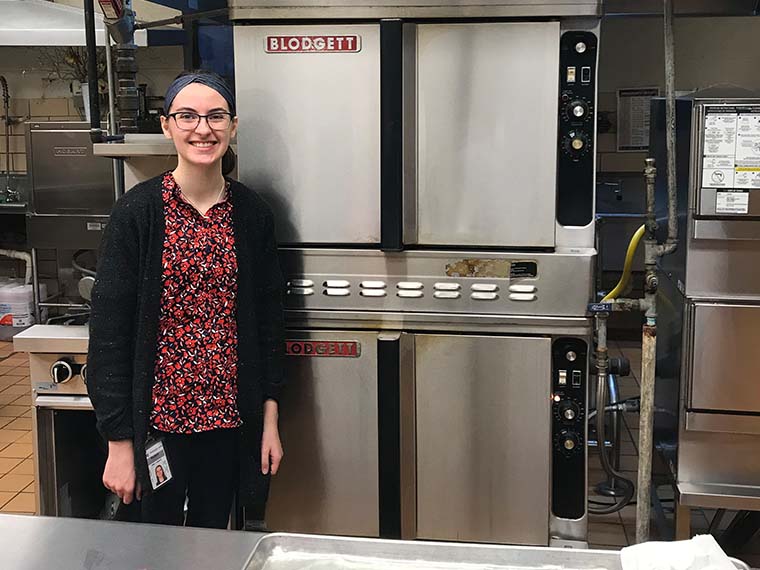The information presented on this page may be dated. It may refer to situations which have changed or people who are no longer affiliated with the university. It is archived as part of Mississippi State University's history.
THE MISSISSIPPI DEPARTMENT OF EDUCATION, Office of Child Nutrition has created the Mississippi Recipes for Success, a collection of popular, balanced recipes developed to ensure a child is receiving appropriate nutrition and promote healthy habits that protect against disease, both today and in the future. However, many of the recipes contain oddly-shaped foods that pose a challenge to internal temperature measurement, a key factor pivotal to ensuring that pathogens and bacteria in raw and undercooked foods are eliminated. That's why student researchers in the MSU College of Agriculture and Life Sciences are looking at the best methods of measuring the internal temperature of school lunches to help keep students healthy.
Emily Knight, a senior food science, nutrition and health promotion major, visited five public school cafeterias across Mississippi from December 2019 to February 2020 and took the temperatures of eight different, difficult-to-measure menu items prepared from the Mississippi Recipes for Success.
"We chose the recipes based on the risk of foodborne illness as well as how difficult it is to get an accurate internal temperature because of the menu item's thickness and shape. For example, thin foods like pizzas and hamburger patties aren't thick enough to fully cover the sensing area of a typical thermometer probe. On the whole, the products tested reached a safe internal temperature, but we wanted to know the accuracy of the tools being used," Knight explained.
Because a large portion of the probe's surface area must be immersed for an accurate read, Knight and her team found that the best practice for select menu items was to insert the probe horizontally into the food, rather than vertically, as well as testing temperatures more frequently from the middle of the tray, where the heat is least concentrated.
In addition to studying how best to measure the internal temperature of a menu item, Knight also strived to find the best tools with which to do so. For each of the above-mentioned trials, Knight compared the product's temperature taken by three different commercial thermometers, the highly-accurate thermocouple thermometer as a control, a bimetallic-stemmed thermometer, and an infrared thermometer.
"According to the USDA, the only reliable method for ensuring the safety of food is to check the internal temperature, but there are pros and cons to each of the thermometers we were testing. The thermocouple is very accurate, but it's also expensive and not all that durable. The bimetallic-stemmed is accurate but has very specific upkeep to maintain calibration. The infrared thermometer is also accurate but only on the surface of the food, which isn't necessarily the same as internal temperature," Knight said.
Knight shared that, more often than not, the bimetallic-stemmed thermometer is what's available in public schools and, with recommended practices and maintenance, can be reliably used to find an accurate reading of internal temperature to sustain the health of the children and public at large.
Following the conclusion of this research, Knight and her team will share the results with the Mississippi Department of Education, Office of Child Nutrition, where the measurement techniques will be recommended to foodservice workers to ensure that they have access to the best methodology available to serve children the safest food.
"This research has been a way to tie together my interest in nutrition and my interest in chronic diseases. The ultimate goal of nutrition and one of the main focuses of health promotion is to prevent diseases such as heart disease and cancer that are affected by our diets. Making sure our children's nutrition is wholesome and healthy is an opportunity to help them learn good dietary habits early that will hopefully be carried into adulthood. This research is an important part of ensuring we are meeting these needs," Knight said.
Knight worked under the direction of extension professor Dr. Brent Fountain. This research was funded by the Mississippi Agricultural and Forestry Experiment Station's Undergraduate Research Scholars Program.

